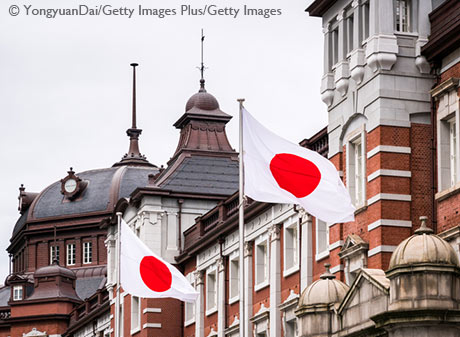Why Is the Bank of Japan the Largest Asset Holder among Major Central Banks?

In many countries, the financial crisis and its aftermath led to undesirably low levels of inflation and high levels of unemployment. With short-term interest rates at or near zero, central banks looked for new ways to stimulate their economies, including the purchase of long-term bonds to lower long-term yields.
“Increases in central bank assets are a rough measure of these long-bond purchases,” explained St. Louis Fed Vice President and Economist Christopher J. Neely in a recent Economic Synopses article. To compare major central banks, Neely looked at the central banks’ international asset holdings as a percentage of GDP.
In the article, Neely also explained the reasons for the particularly large holdings of the Bank of Japan (BOJ). Among four major central banks—which also includes the European Central Bank (ECB), the Bank of England and the Federal Reserve—the BOJ is currently the biggest asset holder with assets worth about 101% of Japanese GDP.Neely noted that the Swiss National Bank holds a greater percentage of assets relative to GDP (about 118%). It bought an unusually large quantity of assets in the form of foreign exchange in an attempt to stabilize its currency.
Among the other central banks Neely looked at:
- The ECB currently holds assets valued at 40% of the annual output of its currency area.
- The Bank of England currently holds assets valued at 27% of England’s GDP.
- The Fed has held as much as 25% of U.S. GDP, Neely explained, although the Fed’s balance sheet as a percentage of GDP has been declining since 2014.
Divergent Policies by Central Banks
Neely noted that the BOJ and Fed policies have moved in opposite directions since 2013-14. For instance, the BOJ has been increasing its asset holdings, while the Fed has allowed its balance sheet to slowly decline.
The decline in the Fed’s balance sheet as a percentage of GDP followed the end of quantitative easing in 2014. The Fed chose to end new purchases in the wake of a string of positive economic reports and nonfarm payroll gains, Neely pointed out.
“The prolonged divergence in policy direction underscores differences in economic conditions in the two countries,” he wrote. “Such separation is a bit unusual for major central banks, which often face similar problems and react to those problems in a similar fashion.”
Bank of Japan’s Asset Holdings since 2013
Neely noted that the BOJ accelerated its accumulation of assets in 2013. After the election of Shinzo Abe as prime minister in late 2012, the BOJ made the following monetary policy moves:
- In January 2013, the BOJ announced that it would begin new asset purchases and double its inflation target from 1% to 2%.
- In January 2016, the BOJ added negative deposit rates on certain reserves held with the central bank.
- In September 2016, the BOJ announced that it would simultaneously target the uncollateralized overnight rate and the 10-year yield. This policy is called “quantitative and qualitative easing with yield curve control” by the BOJ.
These efforts have been broadly successful for the BOJ, the article explained, keeping overnight rates between –0.1% and 0% and 10-year Japanese government bond yields between –0.1% and 0.1%.
“To control yields in this fashion, the BOJ purchased almost twice the net issuance of Japanese government bonds in 2017 and now owns 43 percent of the outstanding bonds,” Neely pointed out. “By purchasing large fractions of both the flow and stock of the bonds, the BOJ has effectively controlled long yields.”
He added, “These measures have not, however, successfully returned Japan’s inflation rate to its 2 percent target.” Neely pointed out that inflation in Japan remains near zero. “Many observers blame long entrenched expectations of static prices for this outcome,” he wrote.
Notes and References
1 Neely noted that the Swiss National Bank holds a greater percentage of assets relative to GDP (about 118%). It bought an unusually large quantity of assets in the form of foreign exchange in an attempt to stabilize its currency.
Additional Resources
- Economic Synopses: Quantitative Easing in Japan: Past and Present
- On the Economy: What Is Quantitative Easing, and How Has It Been Used?
- On the Economy: The Maturity Structure of Treasuries Held by the Fed
This blog offers commentary, analysis and data from our economists and experts. Views expressed are not necessarily those of the St. Louis Fed or Federal Reserve System.
Email Us
All other blog-related questions


